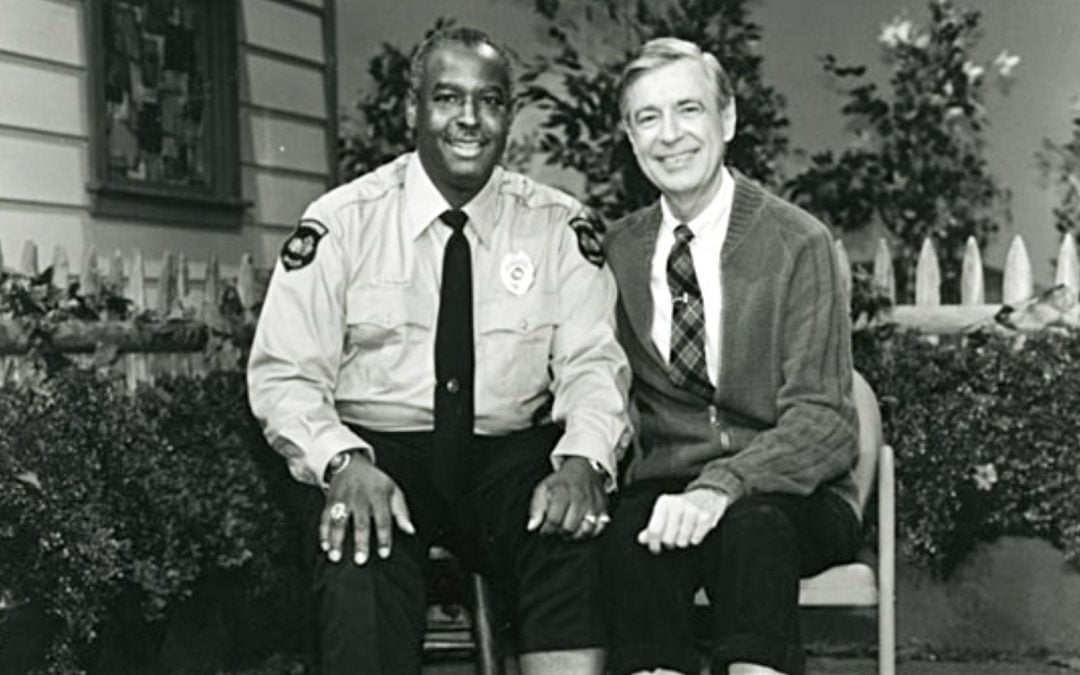Does Mister Rogers still resonate with today’s children?
That was the premise of an article published in The Washington Post in late November.
The author reported, to her surprise, that while other television programs and movies nostalgic to her and her husband did not appeal to their children, “Mister Rogers’ Neighborhood” captured and held their attention.
For several years, my son (who will turn 5 in April) has watched “Daniel Tiger’s Neighborhood,” a PBS cartoon spinoff of the original program.
He has toys, books and clothing related to the show, with a bedsheet and comforter set thrown in for good measure.
So, after reading the article and recalling my love of Fred Rogers’ show as a young child, I decided to see if my son’s reaction would be similar to that of the writer’s children.
During breakfast before school last week, I put on an episode of “Mister Rogers’ Neighborhood” and waited to see how he reacted.
He seemed to quickly become engrossed in the show, watching attentively and asking a few questions.
When it ended, I asked if he liked Mister Rogers, and he offered an enthusiastic “yes” and said he wanted to watch another one.
On subsequent mornings and evenings, he’s wanted to watch more episodes and has begun selecting specific ones to view from those available on PBS Kids and Amazon Prime video.
Seeing episodes of this beloved show from my childhood for the first time in a couple decades, a few thoughts about the show and Fred Rogers’ approach begin to stand out – concepts that seem as relevant to adults as to the children who are the primary audience for the program.
- Compassion and kindness go a long way to making the world a better place.
Rogers’ approach is understated – he speaks softly, simply and slowly – but impactful. He invites the viewer into another world … and not just the neighborhood of make-believe.
He beckons us to enter a realm in which treating one another with respect, seeking to know and understand our neighbors, learning how to respond appropriately to our emotions and focusing on the virtues of compassion and kindness are not exceptional practices.
Rogers’ compassion and kindness didn’t ignore societal injustice. His prophetic witness was bold – one thinks quickly of him cooling his feet in a pool with Clemmons, a black police officer on the show, in a 1969 episode.
Yet, it was embodied in a way that recalls Jesus’ interaction with the marginalized of his day and the nonviolent sit-in protests of the civil rights movement.
Prophetic speech, prophetic preaching, prophetic words are vital to creating a more just and equitable world, but Rogers reminds us that seemingly simple actions can expose and push powerfully against injustice, working to further bend the moral arc of the universe toward justice.
- There is joy and fascination in seemingly everyday actions, roles and tasks.
Mister Rogers explores what we often dismiss as mundane – baking and decorating a cake, painting and drawing portraits, visiting a crayon factory, listening to a musician, flying on an airplane and so on – and reminds us that they are anything but uninteresting.
His approach encourages us to pay attention to what happens to us and around us, to “listen to your life” as Frederick Buechner urges, to slow down and to recognize the wonder of the seemingly simple by seeing it through the eyes of a child.
It’s a helpful and needed reminder amid our ever-diminishing attention spans and the draw to the sensational, exceptional and outlandish.
- Music is one of the best tools for remembering important ideas, lessons and morals.
From the beginning to the end of each episode, Rogers uses song to help viewers remember the lessons he seeks to communicate.
“I like you just the way you are” and other similar phrases set to music give them staying power in our minds.
In both the original series and the cartoon spinoff, I’ve noted how helpful these “simple” ditties are in reinforcing the message, as they’ve stuck in my mind and have become essential parenting tools to help my son recall important life lessons about how we should relate to others.
Houses of faith, too, know the power of setting core beliefs to music, which is both a reminder that music can be a teaching tool and a warning that we should ensure that the lyrics being sung are conveying the desired message.
- There’s screen time and there’s screen time. Put another way: What we watch is as important as how much we watch.
Much has been written about the potential dangers of too much screen time. The focus is most often on limiting the amount of screen time, but I think an equally important emphasis should be refining the content of our screen time.
I can’t imagine that watching a show like Mister Rogers for several hours – even all day on a rainy day or sick day, to push the hypothetical to the extreme – could have anything but positive results.
I’m grateful that Fred Rogers’ life and work is receiving renewed attention with the release of a documentary “Won’t You Be My Neighbor?” in 2018 and a biopic, “A Beautiful Day in the Neighborhood,” this year.
This trend can only result in our betterment amid a pessimistic post-9/11 world, a growing populism and nationalism that wants to narrow the scope of neighborliness, and a U.S. more divided and polarized than I can recall at any other time in my relatively short life.
Will there be, can there be, another Fred Rogers who will emerge to guide and teach us?
It’s easy to be pessimistic that such a thing isn’t possible any longer. That anyone who tried to do so would be dismissed as simplistic and corny. That such a program wouldn’t be greenlit because there’s not enough action, excitement, explosions and so forth.
And yet, my not-quite 5-year-old sitting still and listening with rapt attention (no small feat!) to the man in the red sweater gives me hope that kindness, compassion and neighborliness can still capture the imagination and hearts of children and adults alike.


